How to adjust the distance of LED lights for optimal cannabis cultivation
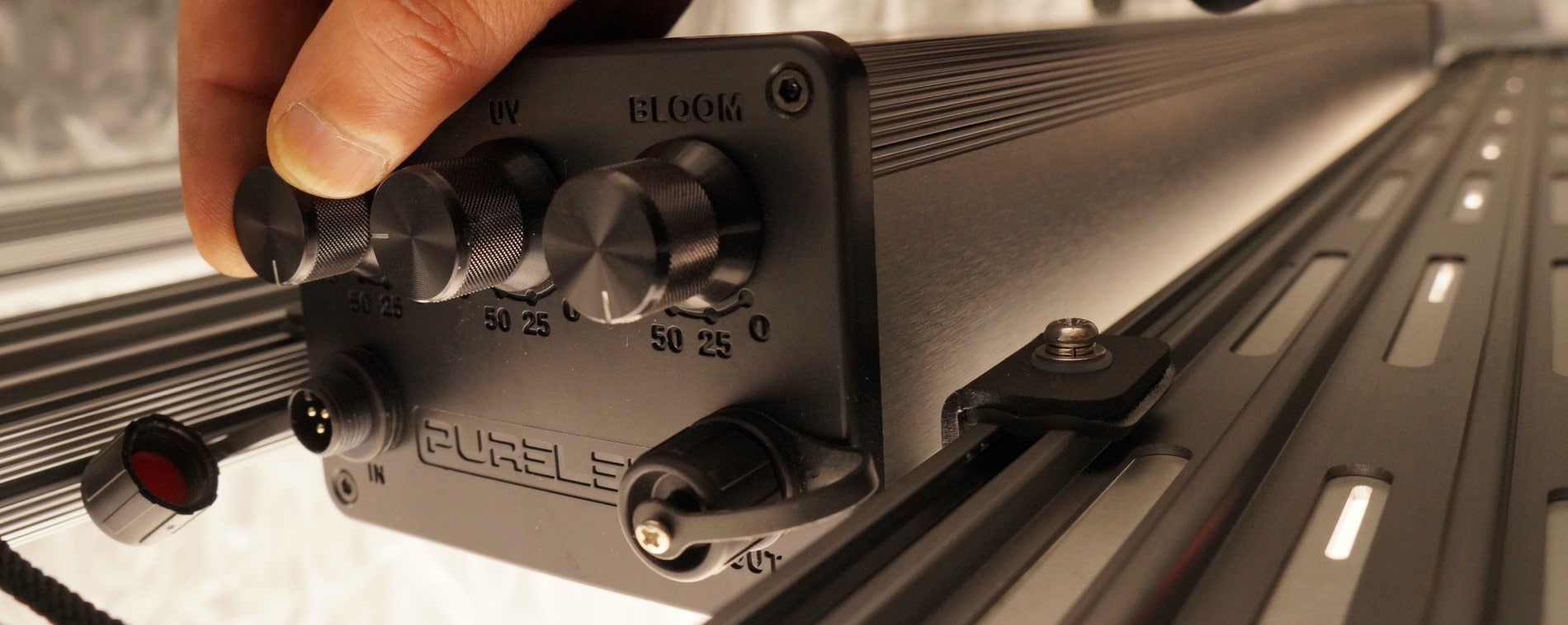
A well-designed lighting system is an essential aspect of any indoor growing environment. Growers must ensure that their plants receive enough energy to develop at an optimal rate without being overwhelmed. This brings us to one of the most frequently asked questions growers ask: How close or far away should LED lights be from the plants?
When growing indoors, there are many factors that must be taken into account to ensure proper cannabis development. And one of the most important elements is lighting. However, lighting is more than just keeping the light on and off during certain times of the day. Today we will focus on the effect of proper spacing of an LED luminaire to the plant canopy and why it is so helpful to crop success.
Why is the distance between LED grow lights and plants important?
One of the main reasons for finding the optimal distance at which to place an LED luminaire is because it directly affects plant health. If the lights are too close, they can cause leaf burn and excessive heat, resulting in stunted growth, wilted leaves and even death. On the other hand, if the lights are too far away from the plants, the light intensity may not be sufficient for photosynthesis, resulting in weak growth and stretching of the stems.
So how do you make the right decision about the distance of the LED light to the plant? We are afraid that there is no exact answer because, although there are a multitude of grow lighting distance tables, the right solution for you will ultimately depend on several factors.
Factors to consider when determining the ideal LED light distance
- Power: Generally, higher wattage LED grow lights have higher light intensity when illuminating areas of the same size. Therefore, luminaires that have a high wattage should be placed farther away from the plants, while low wattage LEDs can be placed closer.
- Development stage: different stages of growth require different light needs. Seedlings need the least amount of light, so lights should be at their highest point. In the vegetative stage, closer light is required for optimal growth. And when your plant flowers, you will need to move the lights closer again to provide higher PAR levels for trichome production. Here is a guideline table of recommended heights for LED grow lights at different stages of growth, which you can use to calibrate your LED lighting setup:
| Power | Seedling stage | Vegetative stage | Flowering stage |
| 200W | Up to 51cm | 31 to 51cm | 20 to 41cm |
| 400W | Up to 69cm | 51 to 69cm | 33 to 53cn |
| 600W | Up to 97cm | 76 to 97cm | 46 to 76cm |
| 800W | Up to 107cm | 81 to 107cm | 48 to 86cm |
| 1000W | Up to 117cm | 91 to 117cm | 53 to 91cm |
- Light intensity: but better than on the power or the stage of the plants, it is necessary to look at the different light intensities, measured in PAR (Photosynthetically Active Radiation) or PPFD (Photosynthetic Photon Flux Density). Higher light intensities require lights to be hung farther away from plants to avoid light burn or heat stress, while lower intensities may allow lights to be hung closer.
- Light coverage area: if the LED grow lights need to cover a larger area, they may need to be placed higher to ensure that the light is evenly distributed among all plants. Conversely, if the coverage area is smaller, lights can be placed lower for better light penetration.
- Heat production: lights that generate more heat may need to be hung higher to avoid heat stress, while lights with lower heat output can be placed closer to the plants. Always make sure that the temperature of the marijuana leaves is below 30 ºC (you can use an infrared thermometer to measure it).
- Light distribution: some LED grow lamps emit light in a focused or spotlight pattern, while others have a wider beam angle for more even light distribution. Lights with a higher focused beam may need to be hung to cover a larger area, while lights with a wider beam angle may allow for a closer hanging height.
- Genetics: different cannabis strains also have different light requirements and their tolerance to light intensity and heat may differ. For example, plants with delicate leaves may require LED grow lights to be placed farther apart to prevent burning, while more robust plants may tolerate lights hung closer together.
What is the optimal distance between LED grow lights and plants?
As plants progress through their different life stages, it may be necessary to modify the height of LED grow lights to accommodate their ascending size and changing light intensity requirements.
However, many growers prefer to keep their lights at a fixed height and adjust the intensity to meet the specific PPFD (Photosynthetic Photon Flux Density) needs of the canopy during each stage of growth, canopy being understood as the highest branches of the marijuana plants’ foliage.
-
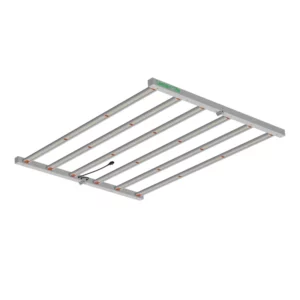 LAZERLITE LED 720W410,00 €
LAZERLITE LED 720W410,00 € -
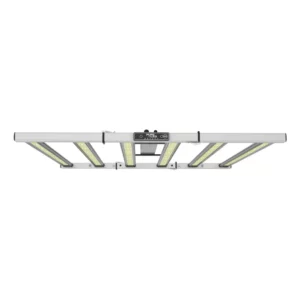 Pure Led MAX1.016,40 € – 1.306,80 €
Pure Led MAX1.016,40 € – 1.306,80 € -
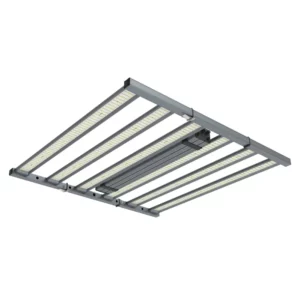 Pure Led EXPERT1.290,00 €
Pure Led EXPERT1.290,00 €
If the LED is dimmable, dimming can be used to adjust the light intensity at the plant surface. If the LED is not dimmable, the only option is to change the suspension height of the luminaire.
It is also important to remember that the change in distance and PPFD is not linear. The fall in PAR obeys the inverse square rule. That is, doubling the distance to your plants results in a PPFD with 25% of its previous value.
While the specific light intensity required by different types of cannabis varies, here are some examples based on the PPFD that you can follow depending on the stage of the cannabis. These examples are not strict rules, they are just to give you a rough idea of what LED light placement generally looks like throughout the growth cycle based on the amount of light that actually reaches the plants within the PAR (Photosynthetically Active Radiation) region essential for photosynthesis:
- Seedling stage: PPFD of 100-400 μmol/m²/s, with LED grow light distance between 60 and 90 cm above the plant canopy. At the seedling stage, lower light intensity is best, as they are delicate and placing the lighting closer can cause discoloration or stunted growth. Placing the light source at this height also prevents the substrate from drying out.
- Vegetative stage: PPFD of 400-800 μmol/m²/s, with LED light distance between 30 and 60 cm above the plant canopy. As cannabis develops more roots and leaves, the amount of light it can tolerate increases. Your plants are now growing to maturity and need plenty of light to reach the flowering stage vigorously, creating strong stems and branches to provide a productive harvest. Therefore, grow lights should be hung closer to the canopy of the marijuana plant.
- Flowering stage: PPFD of 800-1200 μmol/m²/s, with LED light at a distance of 45-60 cm above the plant canopy. As the plants progress through the flowering stage, LED grow lights should also be placed close to the plants to ensure sufficient light penetration and promote optimal flowering of the buds. Moving the luminaire closer will increase light intensity, which can maximize photosynthesis. But having LED lights too close while plants are flowering can include some disadvantages, as plants may react by creating more vegetative mass instead of flowers, expanding instead of devoting that energy to flowering.
Will the heights be different for dimmable LED grow lights?
As mentioned above, LED luminaires with dimmers have more room for maneuver than non-dimmable luminaires. Since growers can adjust the intensity of the light at the flick of a switch, it is possible to set the suspension height of the light and play with this parameter.
One could argue that dimmers are not “necessary” in LED grow lights. However, once you try a dimmable LED luminaire, such as those in the Pure Led PRO V2.0 range, or even The Pure Factory’s Pure Led Q V2.0 range, you’ll be amazed at how much time, money and hassle this feature saves. A dimmer will provide customizable light penetration and consume less energy to save on electricity bills.
-
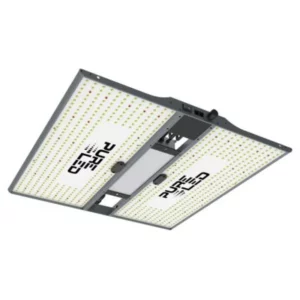 PURE LED Q V2.0345,58 € – 769,56 €
PURE LED Q V2.0345,58 € – 769,56 €
These dimmers are particularly useful during the seedling and vegetative stages, as cannabis plants are more sensitive to light waves than during flowering. Conversely, the full intensity of the LEDs helps stimulate additional trichome production once the cannabis buds emerge.
The number of LED luminaires and the spacing between them affects the light footprint
Another determining factor in determining the distance to the plants depends on the area that needs to be covered, so one of the most important specifications to take into account is the “recommended coverage area” of a luminaire, which should be used mainly for smaller crops composed of pots that only need one or a few lamps.
But larger commercial crops may need fewer luminaires due to the effect of light contribution from nearby luminaires. When LED grow lights are installed in line, side-by-side, or in a grid order, which is very common in commercial cannabis cultivation, the footprint of each light will at least be overlapped by adjacent lights. Then, when the effect of superimposed illumination is taken into account, the actual PPFD value is likely to be higher than the stand-alone configuration.
Thus, in larger crops, where there are many LED lamps in the same room together with reflective walls, it is often more effective to place them higher up so that the light beams overlap. This means that each plant will receive light from many angles and this will promote much better canopy penetration and better overall performance.
For example, a configuration of 4 grow lights with a 150 cm spacing between them offers a minimum level of overlap, which will probably not allow you to get the most out of your investment. On the other hand, this same configuration of 4 lights spaced only 90 cm apart offers much more overlap, and while this increases canopy coverage, it may be too much: more is not always better when it comes to lighting, as this could cause your plants to discolor or burn.
Ideally, these 4 grow lights should be spaced 120 cm apart. The light uniformity of this lighting configuration is the best of the three, because the light can reach the lower areas of the plants without compromising their health. Spacing luminaires that far apart is usually a good benchmark, but variations in wattage, size and spacing will determine what works best for each situation.
Signs that the LED light is too close to the plants.
While it is necessary to progressively increase the light intensity over the life of a marijuana plant to facilitate optimal development, you will need to watch them carefully to make sure you have not turned down the LED lights too quickly. Watch for the following telltale signs of distress:
- Irregular or stunted growth: generally characterized by flaccid, curled or drooping leaves.
- Chlorosis: usually indicated by white or yellow spots on the upper leaves.
- Burn: usually begins with fine brown outlines on leaves closest to the light before discoloration of larger sections becomes evident. Keep in mind that what sometimes looks like a mild burn can actually be an excess or deficiency of nutrients, so many growers end up misdiagnosing and addressing the wrong problem.
Signs that LED light is too far from plants
Leaving the lights too far away from the plants will cause them to grow stretched and weak and, if not rectified, will result in an obvious decrease in their performance. It can sometimes be easy to mistake signs of low light for accelerated growth because plants that are deprived of light will naturally grow upward at a faster rate. However, this process, known as etiolation, is not a good sign: it is the defense mechanism of a plant seeking more light in an attempt to photosynthesize.
If it’s too hot for you, it’s too hot for your plants.
Because LED grow lights are available in such different intensities and wavelengths, it is key to follow the manufacturer’s recommendations. However, there is a simple way to check whether LED light is plant-friendly or not. Simply place the back of your hand over the top of the plant canopy and under the luminaire once you have installed it: if your skin is not comfortable from the heat, then the intensity is at a dangerous level for your plants. This is a great way to know if you need to make adjustments in the distance! As we have seen, in this case you can regulate the intensity of the LEDs, or in any case move your pots away from them.
Conclusion
Again, it is important to understand that there is no universal rule about how far apart to place LED lights at each growth stage. Different manufacturers build their LED luminaires in different ways. There are multiple details to consider, such as the power and angle of individual LEDs within a luminaire or the use of lenses to reflect light downward. The best way to get the perfect distance between the light and the canopy is to consult the manufacturer’s manual.
In sum, the optimal distance between LED grow lights and plants is a crucial factor that significantly influences the success of indoor growing, but varies greatly depending on certain factors. The key is to find the right balance between providing enough light for healthy growth and avoiding light burn or heat stress. Regularly monitoring plants for signs of damage and making necessary adjustments as they grow can help ensure that LED grow lights are positioned at the proper distance.
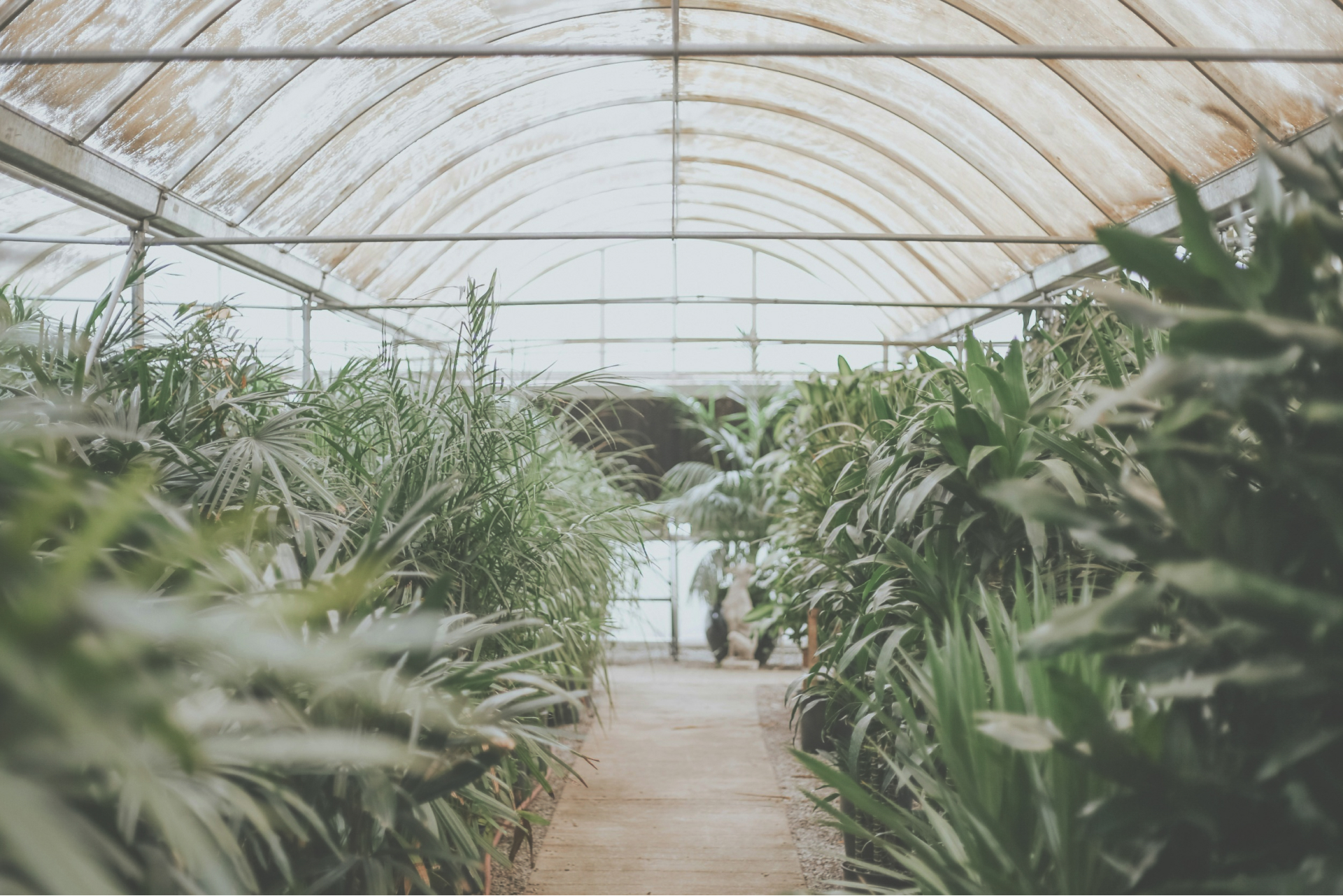
No comments